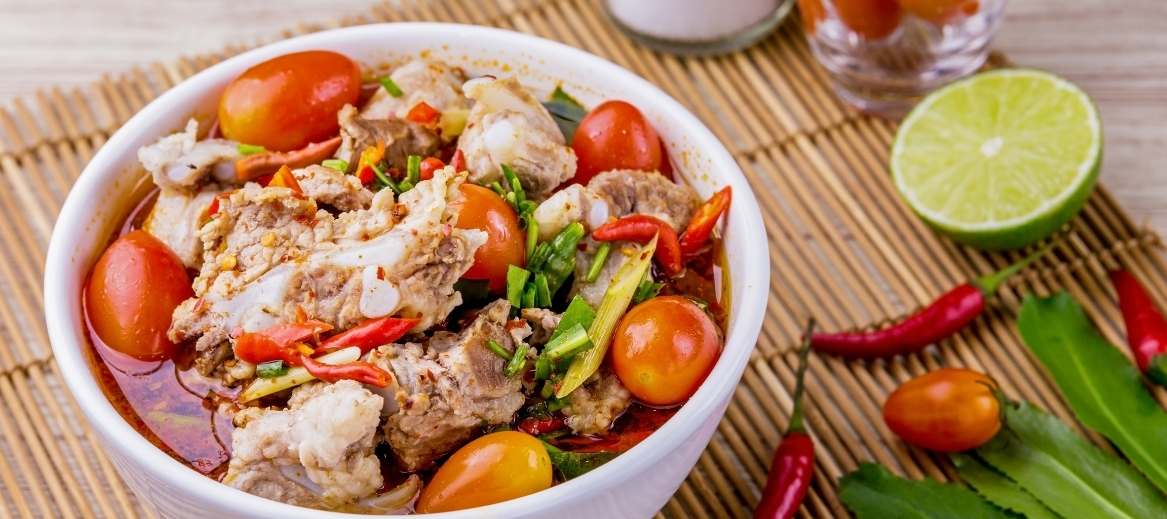PORK BONE SOUP WITH CANTONESE HERB (CHING PO LEUNG)
My favorite Chinese soup is undoubtedly this Cantonese Herb Pork Bone Soup (Ching Po Leung in Cantonese or Qing Bu Liang in Mandarin). It’s a staple in our house, especially in winter.
This is an authentic Cantonese dish.
This soup incorporates barley, one of my favorite grains, as one of the many ingredients needed to make a filling and nourishing soup. Aside from a few fresh pork bones, this “Ching Po Leung” (also written “Ching Bo Leung”) soup is created entirely from dried and preserved ingredients.
If you look up “Ching Po Leung,” you’ll discover that this soup can also be served cold and sweet as a dessert. I’m more familiar with the savory version, so that’s the one we’ll be serving up today.
My family’s Chinese soups, which had many variations, were among my favorites as a child. This Ching Po Leung soup was one of many simple soups served at the restaurant.
Cooking soups and tonics were a skill shared by my parents. It was common to hear them talk about how they learned to create various soups from their family’s elderly members.
COOKING TIPS
There are some helpful notes from Judy, who helped me put this recipe together to ensure that all of the Chinese components were written and translated correctly:
- The second and third days are the finest days to eat this soup since each additional day becomes better and better.
- The clearness of Cantonese soup is its most distinctive feature. The soup may appear clear (like my chicken stock), but it packs a flavorful punch. Simmering low and slow throughout the cooking procedure is necessary to obtain this result. The soup becomes turbid if it is boiled too long.
- Before serving, salt should be sprinkled on the food. While cooking, it’s important to use less salt than usual so the soup’s flavor may shine through.
- Pork neck bones are excellent and can be served with a mild soy sauce if desired. This is a favorite of mine!
- It’s common for Cantonese folks to add dried fish to their soups, but it’s completely optional.
- Using a kitchen scale was the best way to achieve accurate measures for this recipe, which is why you’ll find it in the ingredients list. One should be found in every well-stocked kitchen!
INGREDIENTS:
- 1½ lb. of pork bones
- 4 slices of fresh ginger (cut into ⅛-inch thick)
- 45 g of dried Chinese yam
- 60 g of Chinese pearl barley
- 25 g of dried lotus seeds
- 20 g of fox nut barley
- 10 g of dried goji berries
- 15 g of Polygonatum odoratum
- 10 g of dried longan
- 2 pcs. of dried honey dates
- 1 huge piece of dried seafood (such as squid, abalone, and/or scallop)
- 3 quarts of cold water
- Salt (to taste)
INSTRUCTIONS:
- Allow the pig bones to soak for an hour in cold water before using. Drain and rinse thoroughly. The soaking step removes any contaminants or blood to maintain the soup clear.
- Put the pork bones in a large stockpot and cover with cold water until completely submerged. Bring to a rolling boil over high heat. Turn off the heat, remove the pig bones from the pot, and rinse them thoroughly in a strainer. Also, make sure to clean the soup pot thoroughly. To achieve a clear soup, all leftover contaminants in the pig bones will be removed during this step.
- Bring three quarts of cold water to a boil in a separate pot, then add the pork bones, ginger, and other dried ingredients. After bringing the elements to a boil, immediately lower the heat to simmer. 3 to 4 hours of simmering is sufficient.
- Clean the soup’s surface by skimming off any fatty buildup before serving. Serve immediately with a dash of soy sauce on the side for dipping your pork. Salt to taste.
